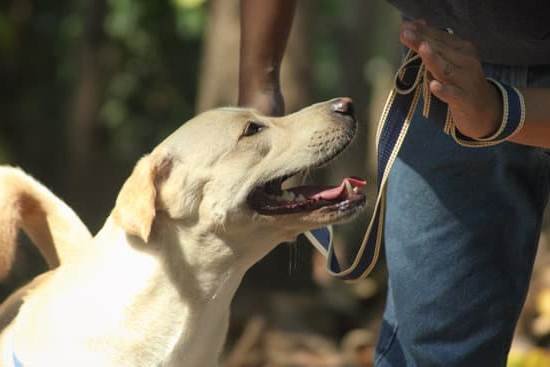Diabetic service dogs play a crucial role in the lives of individuals with diabetes, providing assistance and support in managing their condition on a daily basis. These specially trained dogs possess unique skills and tasks that help their owners detect fluctuations in blood sugar levels, retrieve medication or testing kits, and even respond to emergency situations.
Understanding the importance of diabetic service dogs is essential in recognizing the incredible impact they have on enhancing the quality of life for those with diabetes.
Living with diabetes can present numerous challenges, from monitoring blood sugar levels to managing insulin doses. Diabetic service dogs are trained to assist individuals by alerting them to potential high or low blood sugar events before they become hazardous. By using their heightened sense of smell, these remarkable animals can detect subtle changes in scent that accompany fluctuations in blood sugar levels. This enables their owners to take necessary actions to prevent dangerous situations or seek medical assistance promptly.
In addition to alerting their owners to changes in blood sugar levels, diabetic service dogs are also trained to perform various tasks that aid in day-to-day management of diabetes. For example, they can be taught to retrieve medication or glucose testing kits during emergencies when their owners may not be able to do so themselves.
These dogs can even be trained to fetch juice or snacks when low blood sugar occurs, providing immediate nourishment for their owner’s safety. The unique skills possessed by these canine companions make them invaluable partners for individuals living with diabetes.
Overall, understanding the importance of diabetic service dogs is crucial in acknowledging the significant impact they have on the lives of individuals with diabetes. From detecting fluctuations in blood sugar levels to assisting with daily tasks related to diabetes management, these highly skilled animals provide unparalleled support and companionship for their owners.
In the following sections, we will delve deeper into what makes a good candidate for diabetic service dog training and explore the techniques used in training these remarkable animals.
What Makes a Good Candidate for Diabetic Service Dog Training?
Diabetic service dogs play a crucial role in assisting individuals with diabetes in their daily lives. These specially trained canines are capable of detecting fluctuations in blood sugar levels, alerting their owners to potential highs or lows, and even retrieving medication or glucose testing kits during emergencies. However, not every dog is suitable for this type of training. It is important to understand the necessary characteristics and temperament traits that make a good candidate for diabetic service dog training.
Necessary Characteristics and Temperament Traits
When selecting a dog for diabetic service dog training, certain characteristics and temperament traits are essential. The ideal candidate should be intelligent, trainable, and have a strong desire to please their owner. These dogs must also possess calm and stable temperaments, as they will often need to work in various environments with distractions.
An important characteristic to look for is excellent focus and attentiveness. Diabetic service dogs need to be observant and responsive to their owner’s needs at all times. Additionally, they should exhibit a gentle disposition and be comfortable working closely with people.
Suitable Breeds for Diabetic Service Dog Training
While individual temperament traits are more important than breed alone, some breeds tend to excel in diabetic service dog training due to their inherent qualities. Labrador Retrievers, Golden Retrievers, Poodles, German Shepherds, and Border Collies are among the most commonly chosen breeds for this type of work.
These breeds often possess the necessary intelligence, trainability, and focus required for successful diabetic service dog training. It is crucial to remember that each dog is unique and should be evaluated individually based on its temperament rather than solely relying on breed preferences.
Ultimately, selecting the right candidate for diabetic service dog training involves careful consideration of both individual temperament traits and appropriate breed characteristics. By choosing a suitable candidate from the start, it increases the likelihood of success throughout the rigorous training process ahead.
Choosing and Training a Puppy for Diabetic Service Work
When it comes to training a diabetic service dog, selecting the right puppy is crucial. This section will guide readers on how to choose a suitable puppy for diabetic service dog training and provide insights on the basics of obedience training and socialization for the chosen puppy. Additionally, we will explain the importance of early exposure to the scent of low or high blood sugar levels.
Selecting a Suitable Puppy
The first step in choosing a puppy for diabetic service work is to consider their temperament and characteristics. A good candidate for this type of training should possess traits such as intelligence, willingness to learn, and adaptability. They should also be stable, calm, and confident in different environments.
It is also essential to select a breed that is well-suited for diabetic service work. Breeds commonly chosen for this role include Labrador Retrievers, Golden Retrievers, and Poodles due to their intelligence, trainability, and gentle nature. However, breed alone does not guarantee success; individual temperament must be considered as well.
Obedience Training and Socialization
Once a suitable puppy has been chosen, basic obedience training should commence as early as possible. Teaching commands like sit, stay, come, and heel are essential for creating a foundation of control and discipline in the dog’s behavior.
Socialization is equally important as it helps puppies develop confidence while interacting with various people, animals, and environments. Exposing them to different situations can help prevent fearfulness or aggression later in life. Introducing them to new sights, sounds, smells from an early age will increase their adaptability when encountering these stimuli during their service work.
Early Exposure to Blood Sugar Levels
One critical aspect of training diabetic service dogs is exposing them early on to the scents associated with low or high blood sugar levels in individuals with diabetes. This training helps them learn to detect fluctuations in blood sugar levels and alert their owner before a critical situation arises.
To do this, trainers can use scent samples from individuals experiencing high or low blood sugar levels. Introducing the puppy to these scents while engaging in positive interactions, such as play or treats, will create a positive association with the smells. With consistent exposure and reinforcement, the puppy will learn to recognize and respond appropriately to these scents when they encounter them during their service work.
By carefully selecting a suitable puppy for diabetic service dog training, providing obedience training and socialization, as well as introducing early exposure to blood sugar levels, trainers can begin laying the foundation for a successful partnership between the dog and their diabetic owner.
Establishing the Foundation
When it comes to training a diabetic service dog, basic obedience is an essential foundation. These skills provide the groundwork for more specialized training, allowing the dog to perform their tasks effectively and safely. In this section, we will discuss the fundamental commands every diabetic service dog should learn and explore effective training techniques.
- Sit: Teaching your dog to sit on command is crucial for their safety and the owner’s convenience. Use positive reinforcement, such as treats or praise, to encourage the dog to sit when given the cue.
- Stay: The “stay” command is vital for keeping the diabetic service dog in place until released. Start by having your dog sit, then give the cue and step back a short distance. Gradually increase the distance and duration as your dog becomes more proficient.
- Come: The “come” command teaches the dog to return immediately when called. Begin by calling your dog’s name and using an enthusiastic tone of voice while patting your leg or using a treat as motivation.
- Heel: Heeling means walking calmly beside their owner without pulling or lunging. Start by holding a treat close to your leg while walking forward, rewarding the dog whenever they stay in position. With consistent practice, gradually reduce reliance on treats.
Positive reinforcement is key during obedience training for diabetic service dogs. Reward good behavior with treats, toys, or verbal praise to reinforce desired actions and attitudes. It’s important to maintain consistency throughout training sessions so that your furry companion understands what is expected of them.
By mastering these basic obedience commands, you are laying a solid foundation for more advanced tasks specific to assisting individuals with diabetes. Remember that patience and consistency are key when training your diabetic service dog – progress takes time.
Specialized Diabetic Alert Training Techniques
Training a diabetic service dog to detect fluctuations in blood sugar levels is a vital skill that can greatly enhance the quality of life for individuals with diabetes. These specialized alert training techniques are essential in teaching dogs how to recognize and respond to high and low blood sugar levels.
One of the key methods used in training diabetic service dogs to identify fluctuations in blood sugar levels is scent training. Dogs have an incredibly sensitive sense of smell, which enables them to detect various scents associated with different physiological changes in the human body. Through positive reinforcement, trainers gradually introduce the dog to the scent of low and high blood sugar levels, associating these scents with rewards or treats.
To start scent training, trainers will collect samples of sweat from individuals experiencing low or high blood sugar levels. These samples are then presented to the dog while they are engaged in activities they enjoy, such as playtime or eating. By consistently pairing the specific scent with positive experiences, the dog begins to form an association between the smell and a treat, prompting them to alert their handler when they encounter that scent in the future.
Another technique used in diabetic alert training is called “alerting behavior shaping.” This involves teaching the dog specific behaviors they can perform when they detect changes in their owner’s blood sugar levels. For example, some dogs may be trained to paw at their handler’s leg or retrieve a glucose testing kit when they sense low or high blood sugar. This process requires patience and consistency from both the trainer and handler.
It is important to note that each individual diabetic service dog may require slight variations in training techniques based on their unique skills and temperament. Some dogs may naturally show more aptitude for scent detection, while others may excel at performing tasks related to responding to high or low blood sugar levels. Trainers must adapt their methods accordingly and tailor their approach to cater to each dog’s strengths.
By employing these specialized diabetic alert training techniques, diabetic service dogs can become invaluable companions for individuals with diabetes. Their ability to detect blood sugar fluctuations and perform essential tasks can be lifesaving in emergency situations and significantly improve the overall well-being of their owners.
Advanced Training
Training diabetic service dogs to respond to high and low blood sugar levels is a crucial aspect of their training. These specially trained canines can be taught to detect fluctuations in the blood sugar levels of their owners, allowing them to take appropriate action when necessary.
In this section, we will explore the specific tasks that diabetic service dogs can be trained to perform when their owner experiences high or low blood sugar levels, as well as techniques for training them to retrieve medication or glucose testing kits in emergency situations.
When it comes to responding to high and low blood sugar levels, diabetic service dogs can be trained to exhibit a range of behaviors. For instance, they can be taught to paw at their owner if they detect low blood sugar, signaling the need for immediate attention. Conversely, if the dog detects high blood sugar, they may be trained to retrieve medication such as insulin from a designated area and bring it to their owner.
To train these responses effectively, positive reinforcement methods are often employed. By associating treats or praise with the desired behaviors, diabetic service dogs learn to recognize and act upon changes in blood sugar levels. It is important for trainers to establish clear cues for each behavior so that the dogs understand what is expected of them.
Another important aspect of advanced training for diabetic service dogs is teaching them how to retrieve medication or glucose testing kits during emergencies. This skill is essential in ensuring that individuals with diabetes have immediate access to the tools they need when faced with high or low blood sugar levels. Trainers use various techniques such as scent association and object retrieval training to teach these tasks effectively.
By providing specialized advanced training that focuses on responding appropriately to high and low blood sugar levels, diabetic service dogs become invaluable companions for those living with diabetes. Their ability to recognize and alert their owners about these fluctuations allows individuals with diabetes greater peace of mind and increased independence in managing their condition.
Public Access Training for Diabetic Service Dogs
Diabetic service dogs play a crucial role in assisting individuals with diabetes in their daily lives. These highly trained canines are able to detect fluctuations in blood sugar levels and perform specific tasks to help their owners manage their condition effectively.
However, a diabetic service dog not only needs to be well-trained in detecting and responding to blood sugar levels but also needs to behave appropriately in public settings and around distractions. This is where public access training becomes essential.
Public access training for diabetic service dogs involves teaching them how to act appropriately while accompanying their owners to various public places such as restaurants, stores, hospitals, and transportation systems. It is important for these dogs to remain calm, focused on their tasks, and non-reactive towards people or other animals they may encounter. This type of training ensures that the dog can effectively assist its owner while maintaining proper behavior within the community.
To begin public access training, it is important to have a solid foundation of basic obedience commands such as sit, stay, come, heel, and leave it. These commands lay the groundwork for the dog’s behavior in public settings. Positive reinforcement methods should be used consistently during training sessions to encourage desired behaviors and discourage unwanted ones.
As part of public access training, distractions should be gradually introduced to desensitize the dog and teach it how to remain focused on its owner despite external stimuli. The dog should learn how to ignore food on the ground or offered by strangers and how to remain calm around other people or animals without exhibiting aggression or excessive excitement.
It is crucial for individuals training diabetic service dogs to educate themselves about the legal requirements regarding public access rights for service dogs. In some areas, specific documentation or identification may be required. Understanding these laws helps ensure that both the handler and the dog are protected when accessing public areas together.
Continued reinforcement of public access skills throughout the dog’s life is important as well. Regular practice sessions in different environments will help maintain proficiency and keep the dog sharp in responding appropriately to various situations.
Overall, public access training is a vital component of training a diabetic service dog. It allows these remarkable animals to not only assist their owners effectively but also behave appropriately and safely in public settings, enhancing the quality of life for individuals with diabetes.
| Training Goals | Training Techniques |
|---|---|
| Teach obedience commands (sit, stay, come, heel, leave it) | Positive reinforcement methods |
| Introduce distractions gradually | Desensitization techniques |
| Understand legal requirements for public access rights | Educate oneself about existing laws and regulations |
| Maintain skills over time and in different environments | Ongoing practice sessions and exposure to various scenarios |
Maintaining and Fine-Tuning Training for Diabetic Service Dogs
Training a diabetic service dog requires ongoing effort and commitment to ensure that the dog remains proficient in its skills and tasks. After completing the initial training, it is essential to have regular practice sessions and continued exposure to blood sugar scent samples. This section will provide tips for maintaining and fine-tuning the training of diabetic service dogs throughout their lives.
Consistency is key when it comes to maintaining the training of diabetic service dogs. It is recommended to schedule regular training sessions, even if they are brief, to reinforce the commands and tasks that the dog has learned. These sessions can be integrated into daily routines, such as during meal times or walks. By consistently practicing commands and tasks, owners can ensure that their diabetic service dogs retain their skills and respond promptly when needed.
Additionally, it is beneficial to expose diabetic service dogs to different environments and situations. This exposure helps them generalize their training beyond controlled settings. Taking the dog on outings to various locations like parks, shopping centers, or public transport allows them to acclimate to distractions and different social interactions. Gradually increasing the level of difficulty in these environments will further challenge the dog’s ability to remain focused on its owner’s needs.
Regularly assessing a diabetic service dog’s performance is crucial for fine-tuning its training. Owners should pay attention to any signs of inconsistency or changes in behavior that may indicate a need for additional reinforcement or refresher training. Working with a professional trainer or attending advanced obedience classes can also provide guidance on addressing specific challenges or introducing new skills.
By maintaining and fine-tuning their training, diabetic service dogs continue to enhance the quality of life for individuals with diabetes. These highly trained animals offer invaluable support by alerting their owners to fluctuations in blood sugar levels, retrieving medication or glucose testing kits in emergencies, and providing emotional comfort. The dedication put into maintaining their skills ensures that they can consistently perform these vital tasks and reliably assist individuals in their day-to-day lives.
| Tips for Maintaining and Fine-Tuning Training |
|---|
| 1. Schedule regular training sessions to reinforce commands and tasks. |
| 2. Expose the dog to different environments and social settings. |
| 3. Assess performance regularly and seek professional guidance if needed. |
Conclusion
In conclusion, diabetic service dogs play a vital role in enhancing the quality of life for individuals with diabetes. These highly trained canines provide invaluable assistance and support to their owners, helping them manage their condition and stay safe on a daily basis. Throughout this article, we have explored the process of training these remarkable dogs, from selecting a suitable candidate to advanced tasks such as detecting fluctuations in blood sugar levels.
The importance of selecting the right breed and temperament for diabetic service dog training cannot be overstated. These dogs need to possess the necessary characteristics and traits that make them well-suited for this type of work. Additionally, early exposure to the scent of low or high blood sugar levels is crucial in their training process.
We have also discussed the various stages of training, from basic obedience commands to specialized diabetic alert techniques. The ability of these dogs to properly respond to high or low blood sugar levels can be life-saving for their owners. Furthermore, public access training ensures that these service dogs can behave appropriately in public settings and around distractions.
Frequently Asked Questions
Can you train your own diabetic alert dog?
Yes, it is possible to train your own diabetic alert dog. However, it requires a significant amount of time, dedication, and knowledge about dog training techniques. Training a diabetic alert dog involves teaching them to recognize and respond to changes in blood sugar levels, such as highs and lows.
This typically involves scent detection training, as dogs have an incredible sense of smell and can be trained to detect the specific scent associated with changing blood sugar levels. Additionally, they need to be taught how to alert their handler by nudging or signaling in some way when these changes occur. It’s crucial to work with a professional trainer or seek guidance from reputable organizations specializing in diabetic alert dog training to ensure that the dog receives proper training and certification.
How do I get my dog trained as a diabetic alert dog?
To get your dog trained as a diabetic alert dog, there are several options available. One option is to reach out to specialized organizations that provide training programs for diabetic alert dogs. These organizations usually have experienced trainers who will assess your dog’s suitability for training and guide you through the process.
Another option is hiring an individual professional trainer specializing in service dogs or specifically diabetic alert dogs. They can create a customized training program tailored to your dog’s needs and your requirements as a handler. It’s important to thoroughly research and choose reputable trainers or organizations that have a proven track record of successfully training diabetic alert dogs.
What is the best breed for a diabetic alert dog?
While there isn’t one specific breed considered the best for a diabetic alert dog, certain breeds are commonly utilized due to their characteristics that lend themselves well to this role. Labradors Retrievers and Golden Retrievers are two popular choices for diabetic alert dogs due to their intelligence, loyalty, trainable nature, and gentle temperament. These breeds also tend to exhibit good scent-detection abilities needed for detecting changing blood sugar levels effectively.
Other breeds such as Poodles, German Shepherds, Collies, and Australian Shepherds can also make excellent diabetic alert dogs given their intelligence, trainable nature, and ability to focus. Ultimately, the best breed for a diabetic alert dog will depend on various factors, including your specific needs and preferences, as well as the individual dog’s temperament, health, and suitability for training. It is essential to consider factors beyond breed alone, such as the dog’s personality traits and their compatibility with you as a handler.

Welcome to the blog! I am a professional dog trainer and have been working with dogs for many years. In this blog, I will be discussing various topics related to dog training, including tips, tricks, and advice. I hope you find this information helpful and informative. Thanks for reading!





